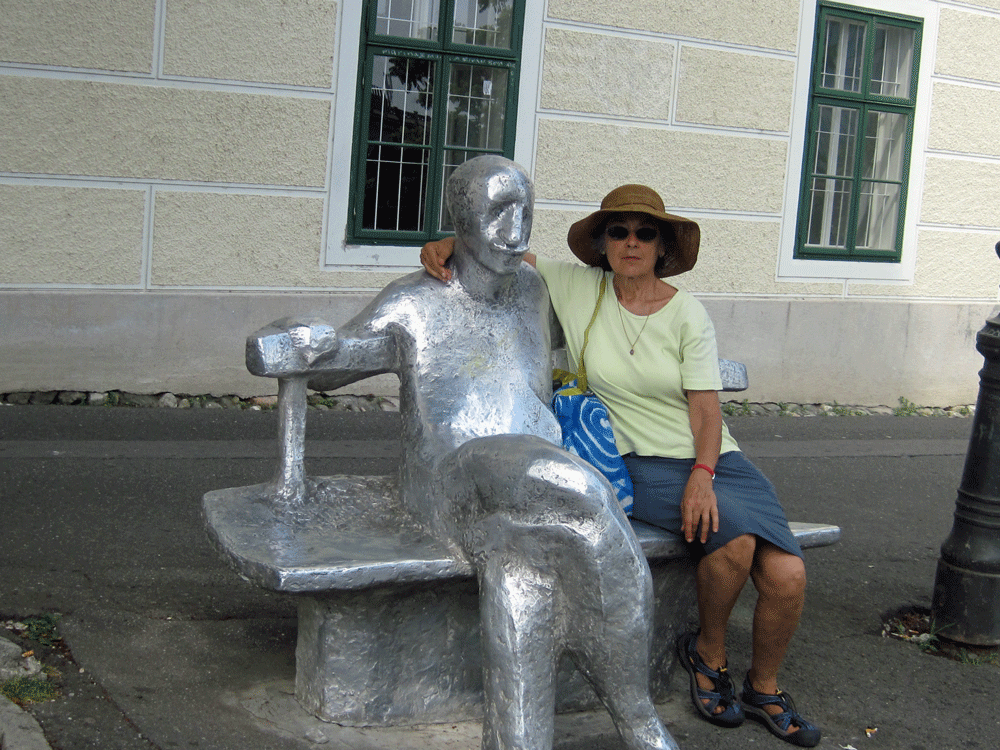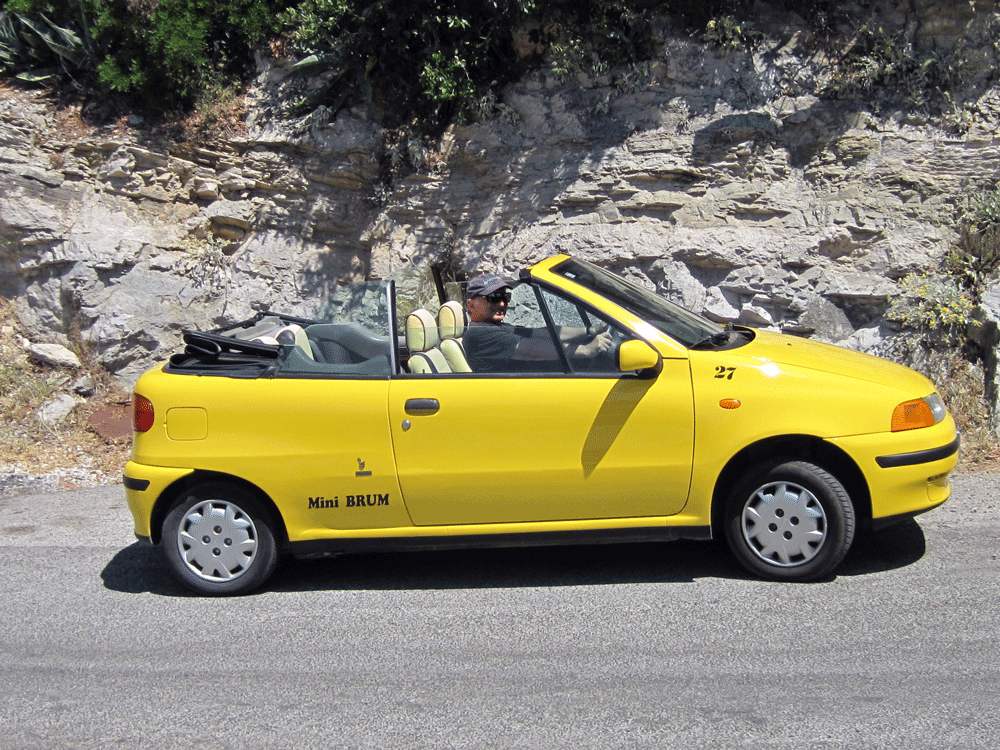Susan and I try not to visit places that are at war or under a dictatorship. We have to time things carefully. We are glad that we went to Mali, especially Timbuktu, in 2011 rather than this year. And I am happy that I got to see Afghanistan’s enormous standing Buddhas in 1965, long before the Taliban obliterated them.
So this seemed a good summer to tour some more of the countries created from what was Yugoslavia (we had been to Slovenia in 2006). We spent the first two of our three weeks in Croatia. We started with a couple of nights in Zagreb, the capital and biggest city, perhaps a million. Our rental apartment was pleasantly airy and ten minutes walk from the old city, which is the part you likely want to see. It has a very efficient system of trams, but you can reach most destinations on foot. Please note that if you are slow, a local pedestrian may shove you aside. Plenty of churches and restaurants. In general, we found Balkans food to be hearty but unsubtle. Lots of fish and meat. Prices quite reasonable by West European standards. There are also many museums. We especially recommend the one devoted to Broken Relationships (MBR). Every city should have such an institution, but I know of none other that does. Exhibits include unused air tickets, memorialized old shoes, and wistful messages. Only a few are erotic. The collection is still expanding. Check it out: http://brokenships.com/en/visit/the_exhibits
So if you have ever had a BR, here is your opportunity: the museum will accept those items that are too painful to have around the house but too significant simply to be thrown out.
We spent a week hiking (“walking”) the Croatian National Parks with a company improbably named Huck Finn. There were only four other clients, all Californian: a couple and two single women. We were a compatible bunch. Our guide, Meca, was a young Serb who had left Croatia during the fighting, but had since returned. The night before his village was burned down, his family had been warned that they had better flee to Serbia. Serbs are now very much a minority in Croatia. In general, we found people willing but not eager to discuss the fighting. It is called by various names, depending on country. In Croatia, it is the Homeland War.
We visited five parks: Ranjak, North Velebit, Plivice Lakes, Pakenica, and Krka. They shared some characteristics: rocky mountains, well-built paths of moderate steepness at most, and streams, lakes and waterfalls. The water everywhere was a remarkably clear (and often swimmable) blue-green. A smooth stony bottom was visible to a considerable depth. The hiking was fairly easy, but quite demanding enough for me. As the oldest and slowest, I was happy to take up the rear. (Once I unknowingly passed the group, which had stepped aside for a view, and was thought lost.) The heat was constant--we had almost no rain our two weeks in the country. On our first day we had lunch by a windowless house. The young man in residence said “the problem is not no windows, but no girls.” The longest hike, and one of the best, came on the second day, in Risnkak. The trail was an achievement of engineering. In many places, it had been built on buttresses of assembled rocks. It was often shaded, to our relief. After three hours it reaches a small, rather uninviting stone hut. The views are terrific in all directions. After the first half mile or so, we saw almost no other travelers. Quite a contrast was our final day, by the Krka River. Here the crowds of locals and tourists were ubiquitous--perhaps because of the easy road access. (This is where I got lost.) But the country is gorgeous, with many lakes and waterfalls.
Notes for climbers: The Balkans are rich in mountains Summits rise to 9000 feet or so, and there is a great deal of steep rock, much of it high quality. Paklenica Park is especially inviting: big rock walls and canyons. Some shorter routes are equipped with bolts, in some cases with quick-draws attached (seems risky to me).
Once our hiking week was over, Meca drove us down to Split, the country’s second city, on the Adriatic Coast. It felt strange to be on our own once more, but we hastened to the city’s big attraction: Diocletian’s enormous palace. It’s pretty grandiose. Here the emperor retired in the early 4th century to pursue his hobbies of dividing his kingdom and killing Christians. The palace is now integrated with hotels (we stayed at the Slavija), restaurants and tourist attractions. Among the latter are drinking places, one of which was in an alley just below our hotel. I had pivo (beer), as I did rather a lot on this trip. Rather than the ubiquitous sex-on-the-beach, Susan chose a piña colada, very traditional. Also available were a number of “shooters,” such as woo-woo, orgasm, and blow-job. A more elevated attraction was a performance of Verdi’s Nabucco--sold out, alas.
Our bus to Dubrovnik the next day took four hours and 20 minutes. The 20 were due to the need to cross into Bosnia and back, a consequence of the strange borders in the parts of what was Yugoslavia. You do need passports to cross.
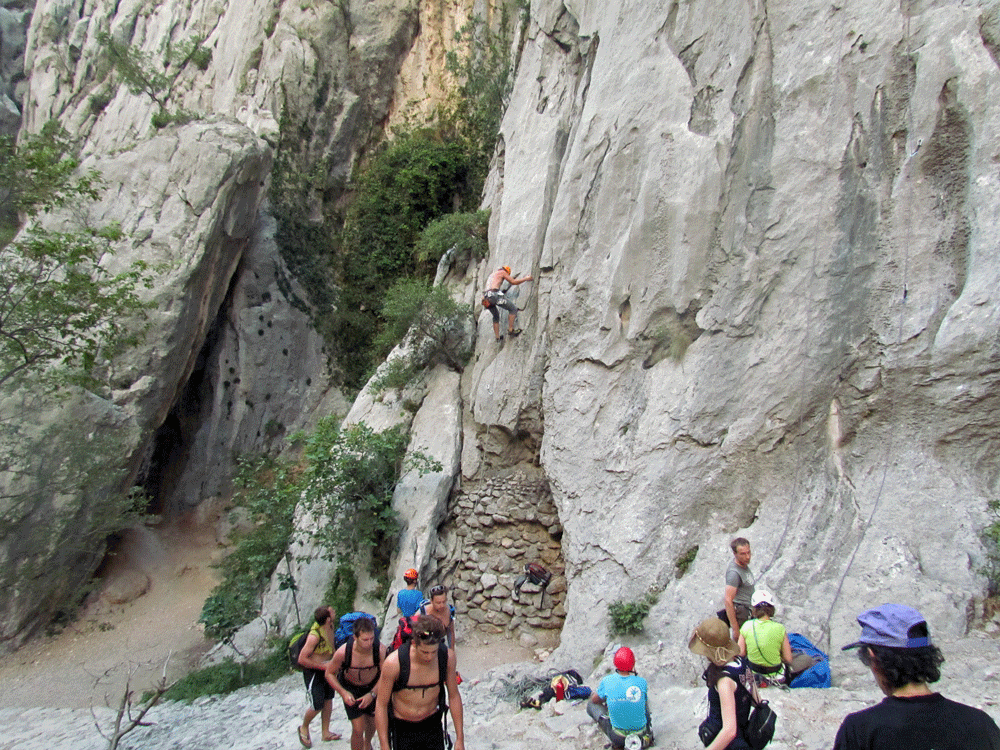
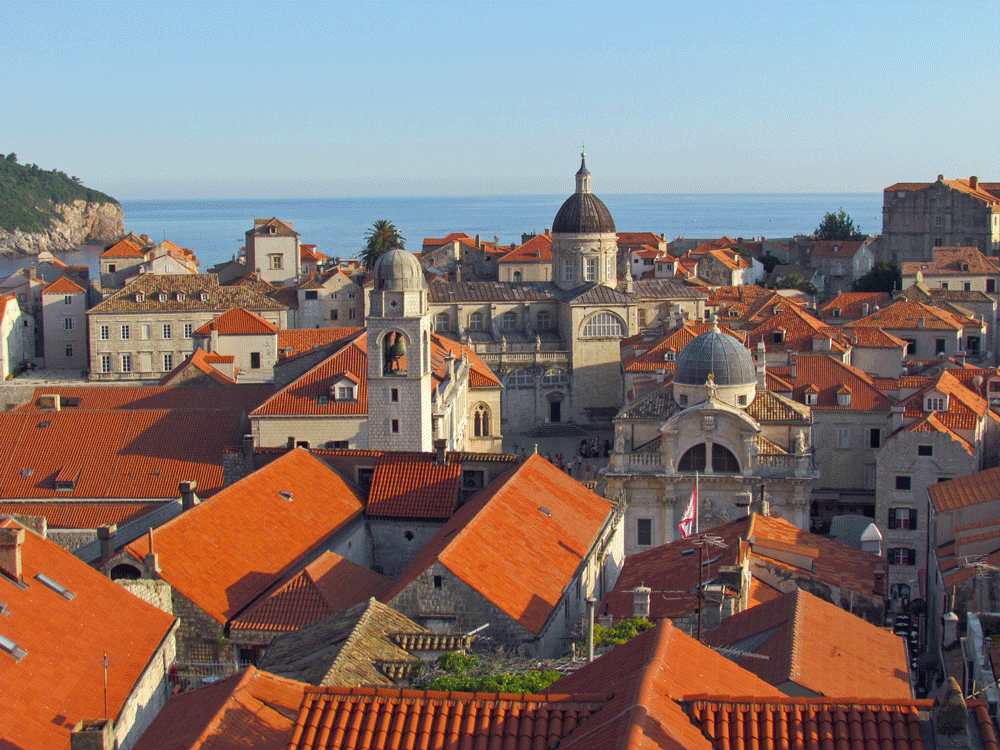
Dubrovnik is the most famous city in Croatia, famed for its walled inner section. The walls are a good walk, with great views into the hills and across the Adriatic. For the greater part of a year, beginning in 1991, the city was under siege. Although much has been rebuilt, you can see buildings that have been destroyed, and many others with shell or bullet holes. We stayed in a small apartment, part of a family compound. It was ten minutes’ walk down to the old town, but at least fifteen back up. Dubrovnik is full of stone steps. Four hundred of them led down to a crowded but refreshing beach. Of course, then you must climb back up.
This side of the Adriatic is replete with islands. We took a catamaran (1.5 hours) to Mljet, one of the larger and nearer. We had rented an apartment for three days at Soline, near the western tip of the 25-mile-long island. It overlooked one of two beautiful salt lakes--not really lakes, despite appearances, but inlets of the Adriatic. The island has a year-round population of just over a thousand. It is heavily forested and ideal for swimming and hiking. We realized that we would have to rent a car for a day, to see the entire island. It was a bright yellow two-door Fiat Punto, just right for the narrow but well-paved roads. In the evening we took a boat to a small island (St. Mary’s), which has an old monastery and a restaurant.
The next morning we returned the Fiat and walked to Pomena, the island’s most touristy spot, home to its only hotel. There we found our first copy of the International Herald Tribune. We walked back to Soline, breaking for a salt-lake swim. We had a fish dinner supplied by our host, Ivan, and tried to get to sleep early. We had to be up at 4:15 to catch the bus that would take us to the catamaran landing. Ivan dropped us at the pick-up point at 4:45. “You may have to wait 20 minutes or so,” he said. We waited a good deal longer. The sun rose. We were at the headquarters of the national park, but it was closed and none else was in sight. Eventually I had to concede that there would be no bus, and no way to catch the catamaran. At 6:30 Ivan returned on his way to work. He was surprised to see us. “Sometimes the bus driver does not come,” he observed. The next catamaran was in the evening, so we were about to miss our last day in Dubrovnik. There was a solution of sorts: Ivan drove us to Sobra, whence a ferry was departing for the mainland. Not, however, for Dubrovnik, but to a point an $80 cab ride west of town. That’s life in a foreign country.
When we left Dubrovnik we left Croatia as well. In a seriously underpowered rental car (an Opel), we drove east to the border with Montenegro. We showed our passports upon leaving and were asked please to return the keys to the apartment. We had indeed made off with them. I cannot imagine a similar attentiveness at a U.S. border post.
As we headed into the mountainous north, the heat receded. Clouds were welcome. At the resort center, Zbladak, we stayed at our most expensive hotel, Soa. The room was indeed big and comfortable, with two televisions. But the view was over some seemingly abandoned other hotel, which had a blocky, Soviet look. And the water wouldn’t run until you inserted the key card in its slot. Very strange.
By now rain was impending. It was very welcome, because not far away a forest fire, started by lightning, had been burning for more than two weeks. It was in a canyon and hard to reach.
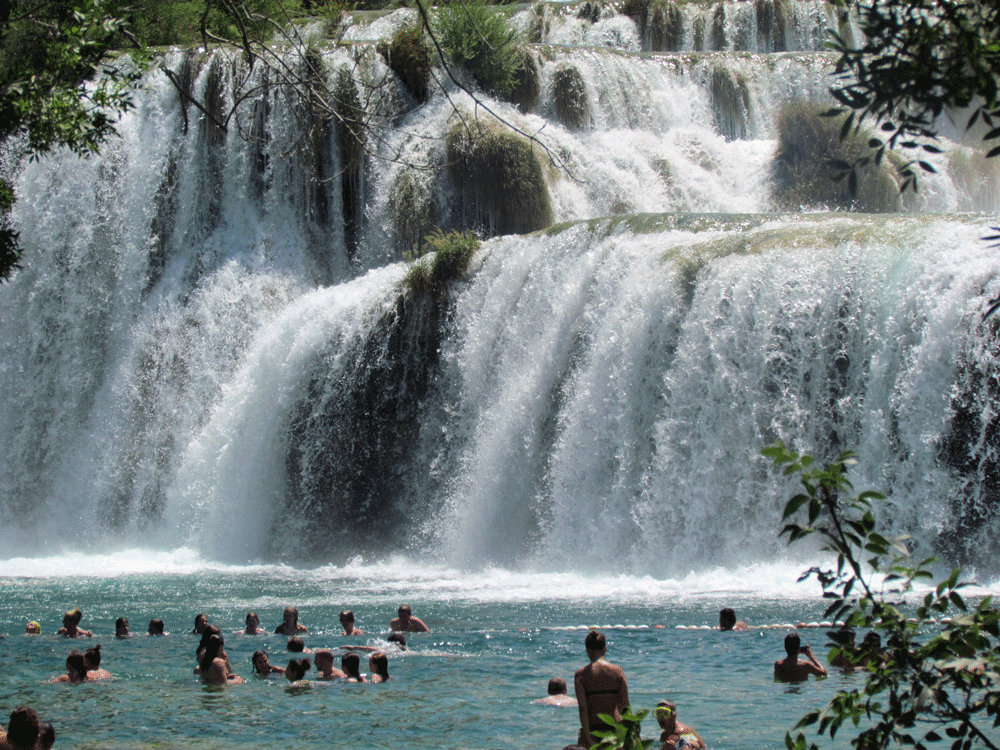
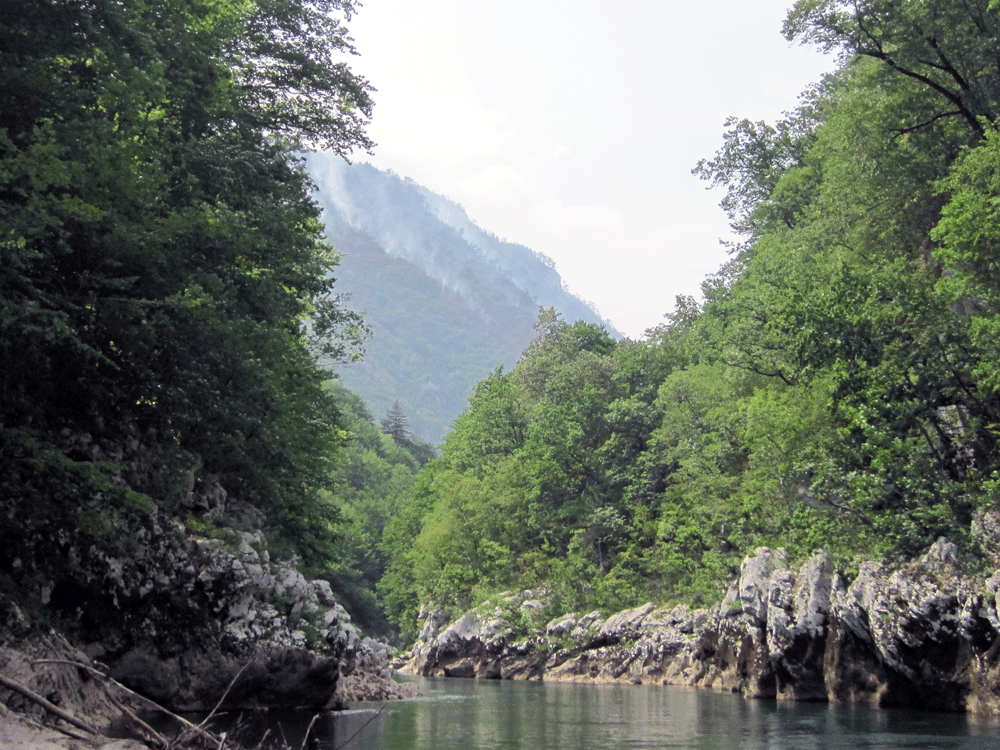
Zbladak was a busy little place, but not really crowded for a weekend. We heard that the tourist parts of what was Yugoslavia are recovering, but tourism is only about 80% of its pre-war level. We went to the nearby national park for a hike into the mountains. They are the highest in the country, rocky and impressive. We did not attempt any of them, just followed a trail up about 1200 feet. On the return we had a swim in Black Lake, which is a light blue and very pleasant.
Next morning we embarked on a rafting trip on the Tara River. Even by our modest standards, the adventure was pretty mild, a class 2 at most. (Earlier in the season, with higher water, the difficulty is greater.) There was no need to backwater or jump to one side to avoid capsizing. Our guide spoke little English. He had two commands: “everybody” (paddle) and “okay” (stop). At times he actually said, “stop.” We were accompanied by two couples, one Dutch, the other German and Austrian. The river was quite lovely, especially as it dipped into a canyon, the second deepest in the world.. Here we saw the forest fire on both sides: lots of smoke and occasional flame. We were glad to get through this section. When we disembarked we were driven for an hour up a dirt road full of hairpins with sharp drops to the side. We were glad not be doing the driving.
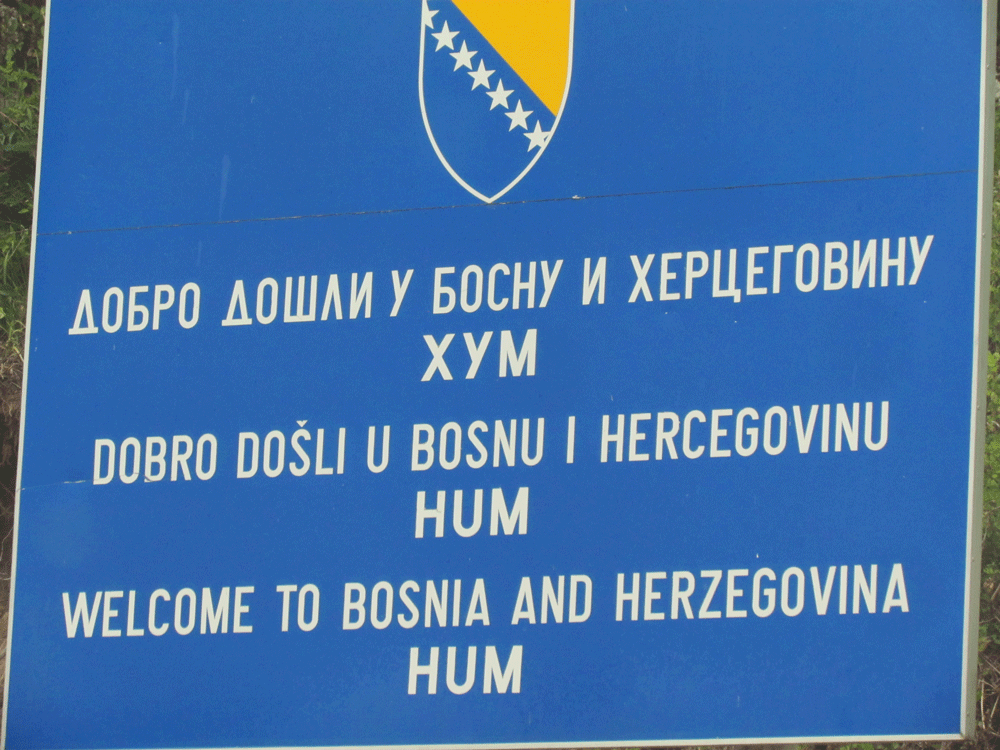
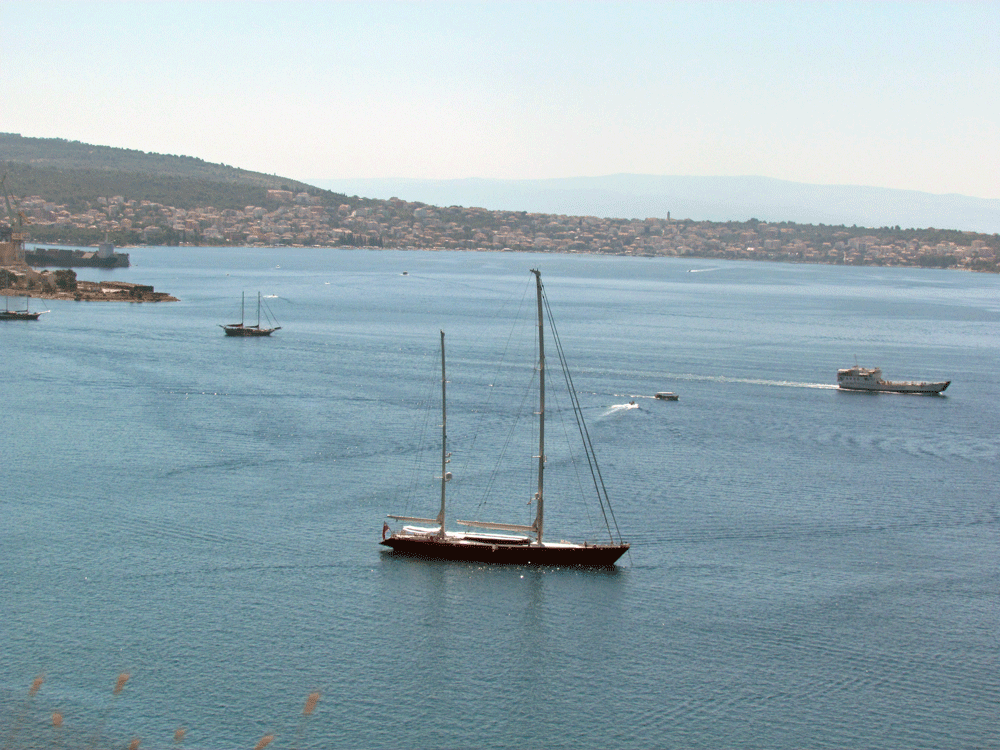
Our final country was Bosnia. The minute we crossed the border the road, though still well enough paved, narrowed noticeably. You had to dodge to the right to avoid oncoming traffic. One time I did this, only to hear an ominous metallic noise as the car suddenly stopped. “I fear we are in difficulties,” Susan said. Actually she expressed herself more coarsely. The rear left tire was several inches above the road. This was because the front right one was hanging over nothing. We had driven off a small trestle. Unhappy memories of our Lesotho misadventure returned. But all the tires were intact. Within minutes two carloads of young locals appeared and got us back on the road. They acted as though such dilemmas occurred every day.
So we did get to Sarajevo early that afternoon. We dropped off the car, intact, at the airport, which is right by the highway on the way in. Then we found a taxi to take us to our hotel, the Ada, in the old part of town. Here our troubles began. The driver spoke Bosnian but not English. He had worked in Germany and was fluent in the language. If my French is broken, my German is completely shattered. But I knew enough to hear that he was telling us that there was not one Hotel Ada but zvei. He took us to the one that we had booked, which was far from the center of things and entirely unappealing. So we continued into town, hoping that the other Hotel Ada, though small, would have a room for us. It did, and proved a very comfortable, friendly place with especially good breakfasts. It was unable to accept credit cards. “because our bank is in the process of privatization.” This had a nasty ring to it, but presented no problems, as there were plenty of cash machines.
Sarajevo is still best known as the site of the assassination of the visiting Archduke Franz Ferdinand in June 1914, which provided the spark for World War I. The site--on a side street on to which the Archduke’s car had inadvertently turned--is marked by a plaque and photographs. Bullet and shell damage marks the city’s more recent turmoil, From 1992 to 1995 the city was under siege. Surrounded by hills, it was an easy target. Over 10,000 died. One of its widest streets is still known as “snipers’ alley.” During the siege, you could only run across it and hope. The place seems peaceful now, but Bosnia is the most heterogeneous of the Balkan states, and the conflict could return.
While the city is peaceful, there is much to be seen, including the National Museum and a fine synagogue. There are also extensive cemeteries; the gravestones mark the resting place of numerous victims of the recent violence, many of them very young. The old town--the most interesting part of the city--is easy walking. Motor vehicles have been excluded from much of it. Many good restaurants, Pavice for one.
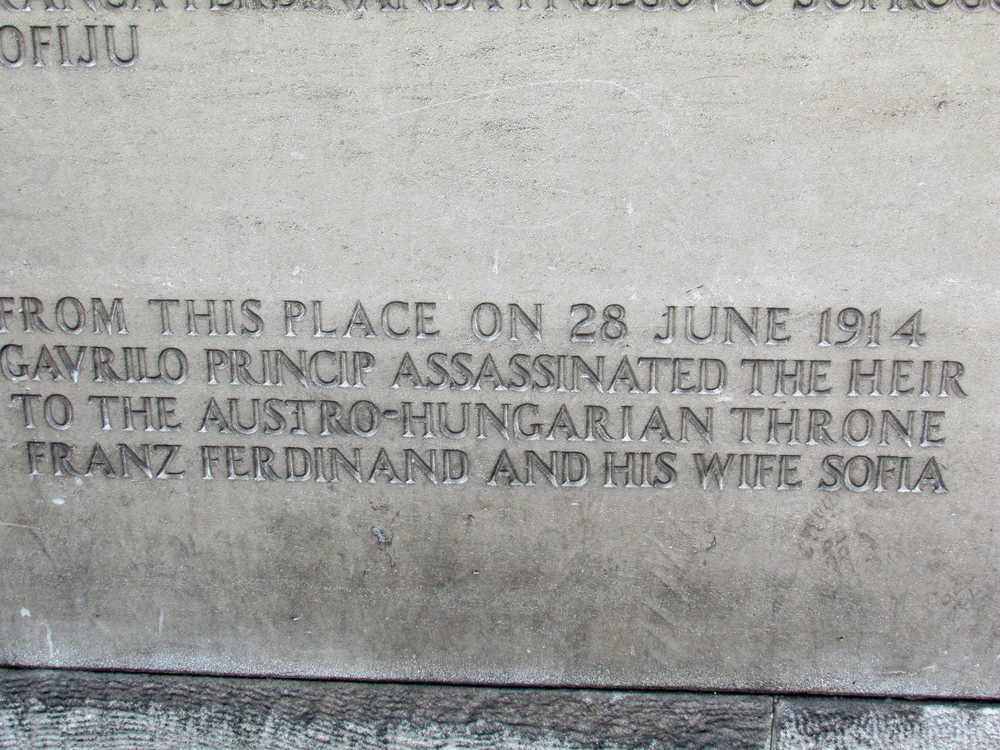
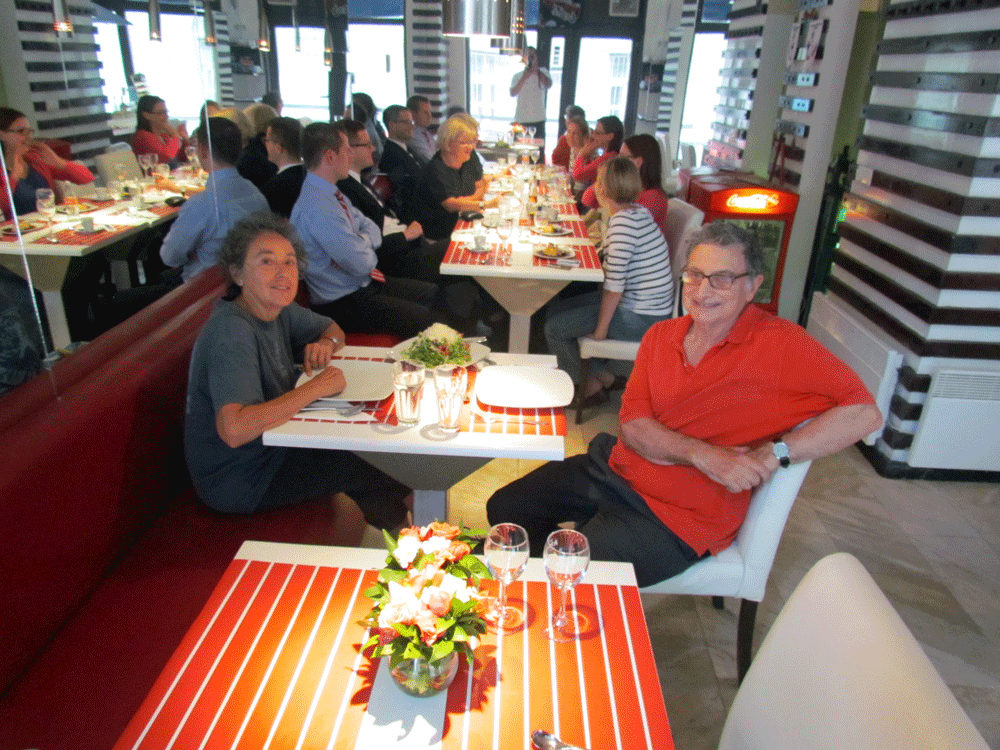
The division of Yugoslavia means not only border crossing but different currencies. Croatia uses the kuna, which seems to be useless anywhere else. We mailed our extras back to our guide, Meca. Montenegro uses the euro. We entered the country with a 50-euro bill and a 1-euro coin. When we stopped for juice drinks, the young woman (teenager) could find no change for the 50. Dollars and kuna were of no avail. She seemed about to cry. Finally she phoned her boss, who provided a solution..... Bosnia uses the Bosnian mark.
As indicated, we stayed some nights in apartments, the first time we had tried this. They are generally less expensive than hotels, but can be unpredictable. The three we rented were all comfortable, but we ended up cooking in none of them. At one place there was no convenient grocery, at another the electric stove produced no usable heat. The experiment was nevertheless a success. All the places were comfortable. Perhaps the best was the first, in Zagreb, plenty of light.
On the hike, the group stayed in three places: the first was a big hotel with airy rooms by a river. Crowds of people, including us, went swimming near a small waterfall. Next stop was very different: a small village by a tiny but still beautiful and swimmable river. Here Meca told us about impacts of the war invisible to us. The village had been almost entirely burned down (we weren’t sure by whom); everyone had survived, though some with psychological scars. And finally a touristy but very agreeable hotel near the Adriatic within walking distance of a national park. Just over the sea was the Italian coast, three times as expensive and crowded.
Susan wants to add that the mountains, seashore, villages and rivers were incredibly beautiful!
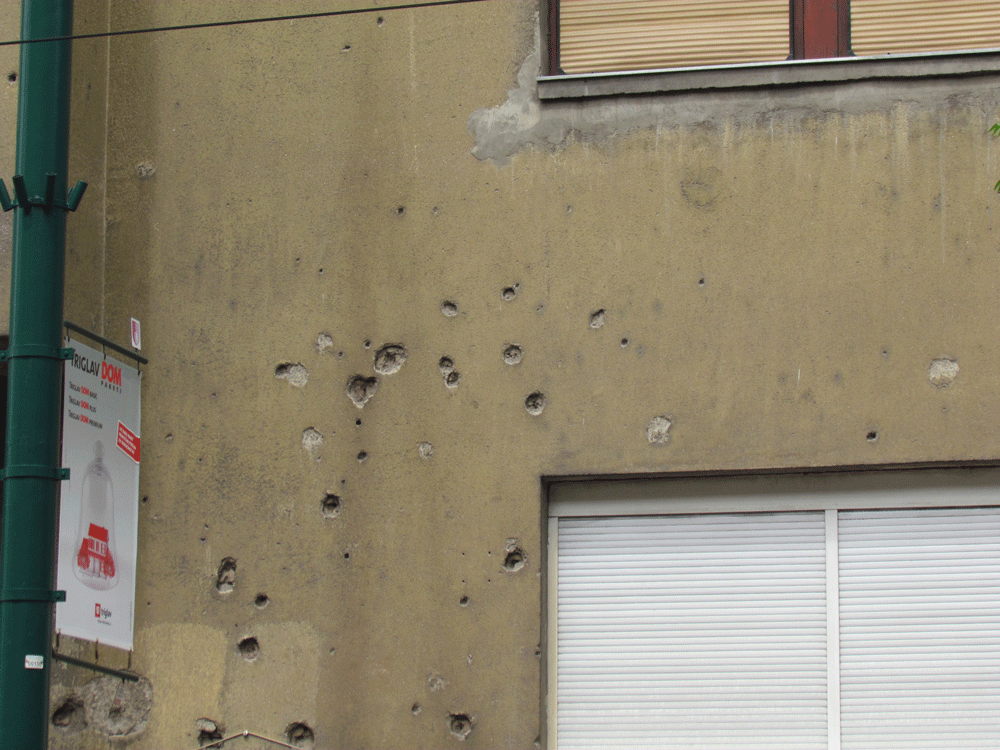
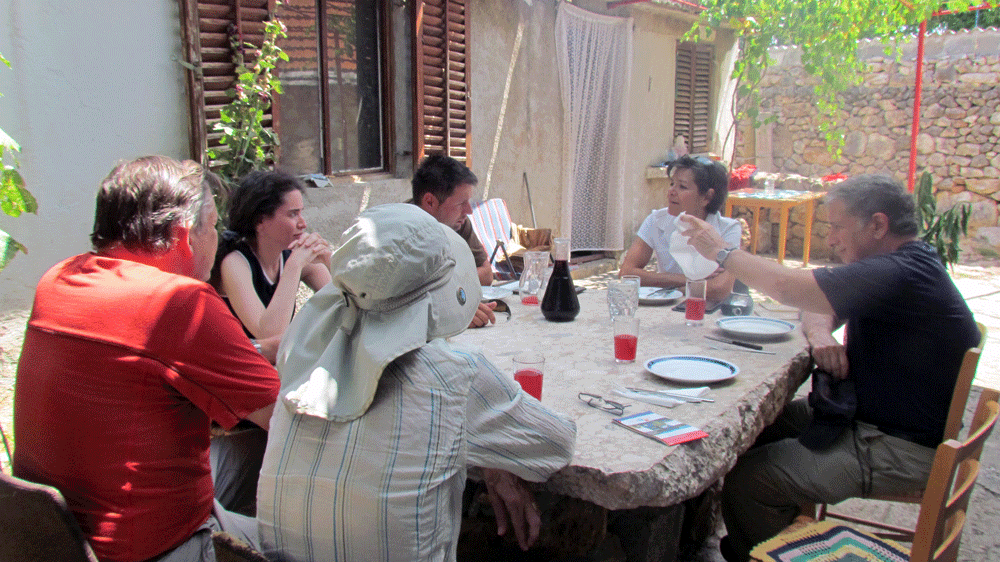
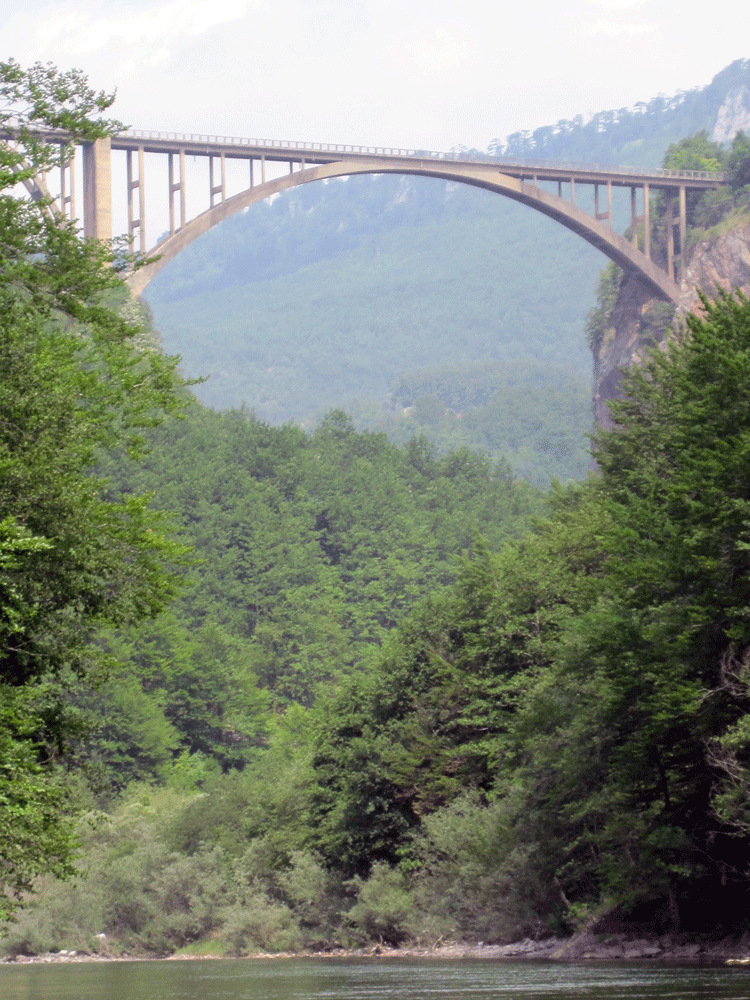
Return to travel page.
Return to home page.
